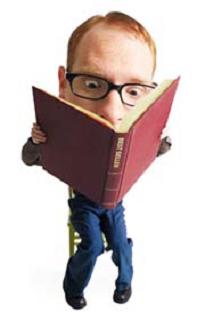
Power Studying Tips for College Students
The following tips have proven to be extremely powerful
guides for organizing, thinking, studying, and learning. They represent the
best advice of successful board passers. The can also work for college students.
Study Space
∑
Your study space should be as quiet and
comfortable as possible. Avoid studying in noisy places such as cafeterias,
recreation rooms, or lounges.
∑
Some people like to have light music or background noise in
the background when they are studying.
∑
Study at a place where you can spread out all your notes and
materials
∑
When studying, keep a waste basket handy.
∑
Have a consistent place for everything,
and above all, keep it there!
∑
Have everything needed for study handy
beforehand. Don't waste valuable time looking for books, notes, of other
information. After you have assembled the items you need, put them where you
can reach them easily.
∑
Have a generous amount of scratch paper for solving problems
on
Study Habits
∑
The odd hour here and there isnít enough. Make a revision
plan you can stick to, with a daily outline that includes times for breaks and
meals.
∑
Divide your study time up into small units and decide how
much time you will spend on each topic. Remember -† it is said that you learn most in the first 20 minutes of
studying a topic!
∑
Begin study no less than 30-90 minutes
after a meal.
∑
Never study within 30 minutes of going to
sleep.
∑
Prioritize! Make a list of what you
intend to study, prioritize the list, and stick to it!
∑
If possible, study no more than 30-40
minutes at a stretch. Many students retain more by studying for short periods
with breaks in between. It all depends on what you're trying to study, but
generally, after a period of study, take a break.
∑
Take study breaks away from your desk or
where ever you are studying. Let the break be a time to think about other
things. Use some break time to reflect, not constantly review what you have
just studied.
∑
Prepare a study timetable to cover the time you will have
available for revision.
∑
Be realistic about the time you will have available - donít
give yourself targets which you cannot reach!
∑
Set study targets that you know you can reach and tick them
off as you achieve them. A list or outline of subjects would come in handy for
this.
∑
Know your strong and weak subjects and mix them up on your
timetable -†† donít do all the nightmare
topics at once.
∑
At the end of a revision block, give yourself a quick test
on what you think you have learned, even if this is simply jotting down key
points or going over them in your head without looking at your notes/texts!
Sometimes it helps to get a friend to ask you questions
The Classroom
∑
Distractions in the classroom are deadly.
To help avoid distractions, sit near the front of the class. You're less likely
to miss something important, and there are far less distractions at the front
than any other location.
∑
Think! Thinking is one of the most
important things you can do in class. If you just sit there passively, and not
think, class can be deadly. Think about what the teacher is saying BEFORE
writing down anything. Writing down each word is a WASTE OF TIME. Reorganize in
your mind what the teacher says, and then write it down. This way you will be connecting
the teacher's words with HOW you think. If you do this, your notes will make a
lot more sense later on.
∑
Pay attention to the course outline or
syllabus. Generally, important points and materials are referenced here and
repeated. Don't be afraid to ask the teacher if there is something you don't
understand. Most teachers will be glad to clarify for you.
∑
Preparing for Class
∑
Efficient students do not underline!
Underlining is not a productive way to emphasize textbook material. It's best
to use a highlighter.
∑
Read the table of contents of your texts
carefully. If the textbooks have chapter summaries, read them first! If you
don't understand the material from the summaries, go back and highlight. Take
notes on what you have highlighted and review your notes. Tip: Break study
material into short segments of length dependent on its difficulty. Remember,
concise notes are more powerful than copious notes. Think about the material!
Then take notes on what you don't know or are not sure of.
How can I remember it all?
Some Simple Techniques
Summarize
Fitting notes onto one side of paper makes them easier to
tackle so rewrite and cut down as you go.
Use Symbols and Diagrams where possible
Visuals help you remember the facts.
Highlight
Pick out key points/ideas using colors.
Record
Try putting important points, quotes and formulae on tape,
If you hear them and read them, theyíre more likely to sink in.
Rewrite
Another method of memorizing is by rewriting values and
constants, or by repeated solution of similar problems that use the same
standard formula.
Talk
Read your notes out loud, itís one way of getting them to
register.
Time
Do past exam questions (and even complete papers) against
the clock Itís an excellent way of getting up to speed. Also, the more you use
what you have learned, the more likely you are to remember it.
On the day of the exam
Make sure you are up in time you donít want to be rushing to
get to the exam. You need time to gather your thoughts. Make sure you have
something to eat before you set off. If you havenít eaten it will affect your
concentration. Check that you have pens, pencils, calculator, etc., with you
before leaving the house
Reading Multiple-Choice Questions
Multiple choice questions are essentially true-false
questions arranged in groups. Usually, only one alternative is correct. Your
job is to pick the alternative that is more nearly true than the others. Read
multiple-choice questions the same way as for true-false. Eliminate obvious
false choices.
Sitting an exam? How to avoid unnecessary mistakes on the day!
You might think these helpful hints are just too obvious and
an insult to your intelligence! However, every year some students make mistakes
in the actual exam as a result of exam panic or simply because of a rush to get
on with answering the questions. You can avoid these mistakes by having these
instructions at the front of your mind as you enter the exam.
Getting Started
Check the paper for the subject and the level are you in the
right exam room with the right paper? Remember to fill in all personal details
as instructed at the start of the paper. Read carefully the instructions at the
beginning of the paper and note particularly:
∑
The total time you are allowed for the paper
∑
If there are any choices in the paper.
Answering the Questions
∑
Read all the questions carefully and remember important
instructions.
∑
Decide how much time you are going to spend on each part of
the paper or each question.
∑
Re-read questions you feel are difficult to understand on
first reading. If you think they are really difficult, come back to them later.
∑
When you have decided on the questions you feel confident
about, tackle these first, but donít spend all your time on them. You should at
least attempt all the questions you are expected to answer.
∑
Look carefully at each question. Some questions need more
time and usually longer answers.
∑
If you see a topic you recognize donít start writing down
everything you know for your answer. If you do, you are probably not answering
the question properly.
∑
Read the question carefully and try to be clear what you are
being asked to do.
∑
Look for conditioning words like not or neither that negate
the answer. Then think about how you are going to organize your answer.
∑
If the question carries a long calculation, it can be
worthwhile to jot down a plan for your answer. Remember, if you are not
answering what you have been asked to do you are unlikely to get any marks!
∑
If you find yourself running out of time, write down key
points you would have put in your answer. That way you may still get the
correct answer.
∑
When you have finished the exam, if you have any time left,
read all your answers (and the questions) again carefully.
Relaxation - Figthing Metal Block
Often the test situation, the examination room, the large
number of candidates, and being watched by the person giving the exam
intimidates candidates. It is important for you to feel comfortable and relaxed
in the testing situation.
Knowledge about taking exams helps people relax during the
actual exam. Keep information about the date, time, and duration of the exam in
mind. Study the previous examination questions or simulation exams.
The method of progressive relaxation involves tensing a
muscle system and then relaxing it. Tensing a muscle will produce increased
relaxation when the muscle is subsequently relaxed. Start at one end of the
body and work to the other end. Practice every day for 10 to 15 minutes until
you gain the increased ability to relax at will.
Alternately tense and stretch various muscles in your body.
Concentrate on the difference in being tense and being relaxed. Tense your
whole body, and then relax your whole body. Practice every day until you notice
the gradual improvement in your ability to relax. This will give you confidence
and the ability to relax when you take the exam.
Another method is to breathe deeply and slowly, letting your
body go limp and allowing every muscle in your body to relax while you
concentrate on your breathing. Start with your hands. Imagine them to be warn
and heavy. Repeat to yourself "my hands are warm and heavy" several
times. Maintain a slow, patterned breath rhythm. Progress to the arms, then the
shoulders, and continue until you relax your whole body. Do this 5-10 minutes a
day. Look into other, different methods of relaxation. Many books about
relaxation techniques are available.
Handling Test Anxiety
Many people are anxious and suffer from stress before and
during an examination. They may even make simple errors that are not typical of
their usual behavior. People who take licensing exams often experience greater
stress due to a need to succeed because the results will determine whether or
not they will be able to enter their chosen field. It is therefore important to
prepare yourself emotionally to take your license exam.
Part of being prepared emotionally is for you to be able to
recognize the symptoms of stress and anxiety. Stress is often strong enough to
lead to increased heart rate, shortness of breath, trembling hands, shaking
legs, nausea, sweating, etc. Test anxiety and worry lead to a series of
negative results including poor concentration, confusion, negative attitudes or
moods, negative self-orientation, fear, anger, and even panic.
Often a person develops poor coping strategies such as
becoming involved in negative self talk. A common psychological defense against
these negative feelings and thoughts is giving up and becoming helpless or
paralyzed during a test. The ability to perform well under pressure, however,
is a skill that you can learn. Several strategies for overcoming test anxiety
follow.
How to approach the examination paper:
∑
Reading time Ė use this time to familiarize yourself with
the examination instructions, and the structure of the examination paper. Also
identify relevant reference material. Writing, marking and the use of
calculators is not permitted.
∑
At the commencement of writing time, complete the candidate
identification details section on the question booklet and the answer sheet
(incomplete details may delay the release of your results).
∑
Watch your time carefully Ė if the paper contains a Part A
and a Part B, strictly adhere to the suggested time allocations for each
section.
∑
Attempt every question Ė marks are not deducted for
incorrect answers.
∑
Assess each question carefully Ė attempt the shorter or
easier questions quickly to allow for more time to answer the more challenging
questions.
∑
Read each question carefully and attempt to calculate the
answer before you read the multi-choice answers provided-referring to these
first may confuse you. Underline or circle important terms and dates in the
question to ensure that you focus on exactly what is being asked.
∑
If you experience difficulty in answering a question, mark a
possible answer, mark the question to return to later, then move on Ė aim to
have 10 minutes left at the end of the examination to review such questions.
∑
Don't waste time double-checking reference materials to
confirm answers you are confident about-generally, candidates should be able to
complete two-thirds of all questions without checking reference materials.
∑
Mark your answers to multiple-choice questions on the answer
sheet provided Ė do not write any other notations on the answer sheet. But if
you used a scratch paper for answering first, remember to transfer your answers
to the answer sheet. Only answers that have been marked on the pre-printed
multiple-choice answer sheet will be checked.
∑
Mark your answers on the multiple-choice answer sheet
progressively during the course of the examination Ė do not record all your
answers on the answer sheet in the last few minutes. You may run out of time,
and extra time to complete the answer sheet can not be provided.


